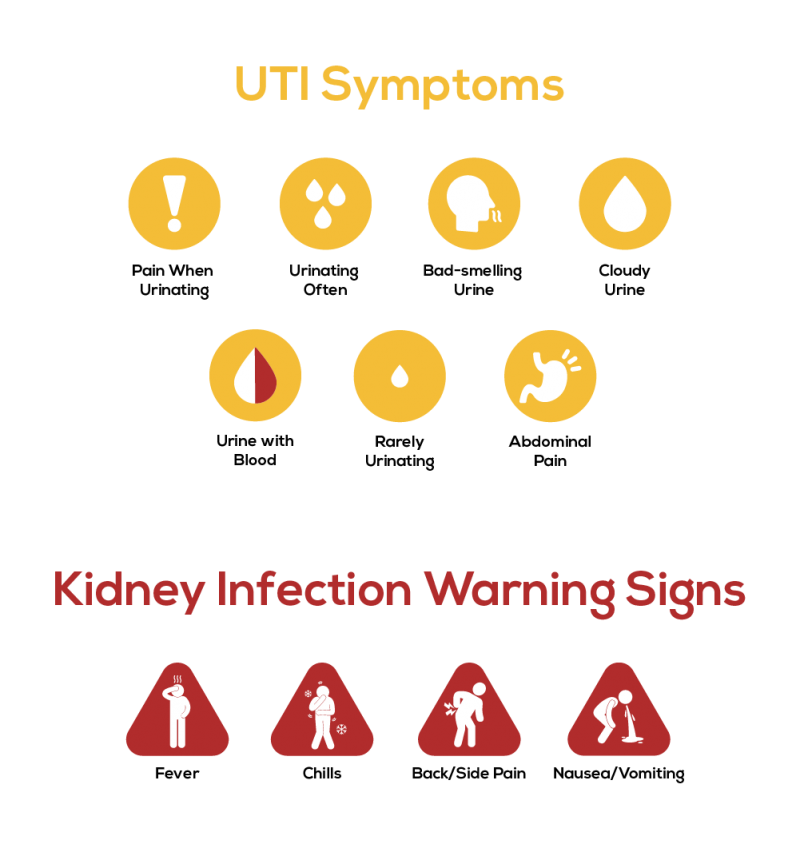Understanding the Differences In Between Kidney Stones vs UTI: Trick Symptoms and Treatments
Comprehending the Secret Distinctions Between Kidney Stones and Urinary System System Infections: An Extensive Overview for Clients
Understanding the distinctions in between kidney stones and urinary system tract infections (UTIs) is vital for clients that may be experiencing comparable signs and symptoms yet encounter greatly various health challenges. As we check out these crucial facets, it ends up being clear that identifying the distinct attributes of each condition can profoundly affect individual end results.
Summary of Kidney Stones
The development of kidney stones, a frequently debilitating and agonizing problem, emphasizes the vital relevance of maintaining renal wellness. Kidney stones, also called renal calculi, are strong masses that create from crystals in the urine. These stones can differ in dimension from a grain of sand to a golf sphere and can reside in any part of the urinary tract. The primary kinds of kidney stones include calcium oxalate, calcium phosphate, uric acid, struvite, and cystine stones, each with distinct causes and risk factors.
Numerous elements contribute to the formation of kidney stones. Additionally, metabolic problems and specific clinical problems may incline people to stone development.
Signs and symptoms of kidney stones can include serious flank pain, hematuria, and queasiness, which usually trigger immediate clinical evaluation. Treatment alternatives differ, varying from raised liquid intake and nutritional adjustments to clinical treatments such as lithotripsy or surgical removal, depending on the size and location of the stones. Comprehending these aspects is crucial for efficient avoidance and administration.
Summary of Urinary System System Infections
Urinary system system infections (UTIs) stand for a typical yet substantial wellness problem, affecting countless individuals each year. These infections happen when microorganisms get in the urinary system, that includes the kidneys, ureters, bladder, and urethra. Most of UTIs are caused by Escherichia coli, a kind of microorganisms generally discovered in the intestinal system. While UTIs can influence anyone, they are specifically widespread in females as a result of physiological differences that promote bacterial access.
The danger factors for establishing a UTI consist of sex-related task, specific types of birth control, urinary retention, and a background of previous infections. Straightforward UTIs are normally limited to the bladder and are a lot more common in healthy and balanced people, while complicated UTIs may entail the kidneys and occur in those with underlying health concerns.
Prompt medical diagnosis and treatment are necessary to avoid issues, such as recurrent infections or kidney damage (Kidney Stones vs UTI). Commonly, UTIs are treated with prescription antibiotics, and safety nets can be used for those with constant events
Usual Signs Contrast
Signs and symptoms of urinary tract infections and kidney stones can commonly overlap, leading to confusion in diagnosis. In contrast, kidney stones have a tendency to cause serious, sharp pain that emits from the back to the reduced abdominal area and groin, commonly defined as colicky discomfort.
Additionally, UTIs may be gone along with by fever and cools, especially in much more extreme situations, while kidney stones can lead to i thought about this queasiness and throwing up due to extreme pain. While discomfort during peeing is a characteristic of UTIs, kidney stones commonly present with more acute pain episodes, which might go and come.
Diagnosis Approaches
Exactly how can health care experts properly set apart between kidney stones and urinary system tract infections? The diagnostic procedure starts with an extensive medical background and a comprehensive review of the person's symptoms. Medical professionals frequently do a health examination, which may disclose inflammation in the abdominal area or flank area, directing the analysis path.
Research laboratory examinations play an essential function in distinguishing in between these two conditions. Kidney Stones vs UTI. A urinalysis can identify the existence of blood, crystals, or germs, which are indicative of either condition. In situations of urinary system infections, the urinalysis might reveal a significant visibility of leukocyte and nitrites, while kidney stones might offer with specific crystals
Imaging studies, such as abdominal ultrasound or computed tomography (CT) scans, are crucial for imagining kidney stones. These imaging strategies make it possible for health care suppliers to assess stone size, area, and potential obstructions in the urinary system system. In comparison, urinary system infections normally do not call for imaging unless problems are suspected.
With each other, these diagnostic approaches equip medical care professionals to precisely set apart and identify between kidney stones and urinary system tract infections, making sure that people get suitable care and monitoring.
Treatment Options and Prevention
While both kidney stones and urinary system tract infections (UTIs) require timely therapy, their monitoring approaches vary dramatically.
The treatment for kidney stones frequently entails pain management, hydration, and sometimes, clinical procedures such as extracorporeal shock wave lithotripsy (ESWL) or ureteroscopy to break or eliminate down stones. People are regularly suggested to increase fluid consumption to assist in stone flow and reduce recurrence. Dietary adjustments may additionally be needed, depending on the stone kind.
On the other hand, UTIs are mainly treated with antibiotics to eradicate the microbial this infection. The certain antibiotic suggested depends upon the bacteria determined and neighborhood resistance patterns. Additional measures, such as increased fluid consumption and urinary anesthetics, might assist minimize signs.
Prevention methods differ as well; for kidney stones, keeping sufficient hydration and adhering to dietary restrictions can be reliable. For UTIs, preventative strategies include appropriate health techniques, peing after intercourse, and potentially preventative anti-biotics for persistent infections. Understanding reference these treatment and avoidance techniques is vital for efficient management and to reduce the danger of issues related to both problems.
Final Thought

Understanding the differences between kidney stones and urinary system infections (UTIs) is necessary for clients who might be experiencing similar signs and symptoms yet encounter significantly various health and wellness challenges. The primary kinds of kidney stones include calcium oxalate, calcium phosphate, uric acid, struvite, and cystine stones, each with distinctive causes and risk aspects.
